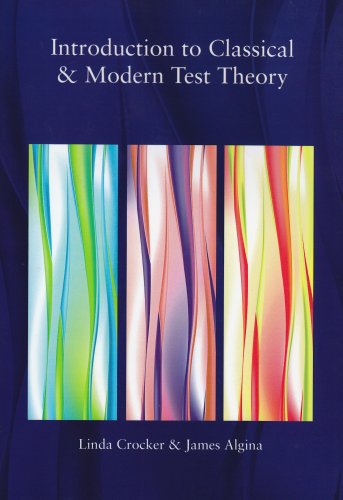Introduction to Classical and Modern Test Theory book
Par stanley doris le dimanche, juillet 17 2016, 05:30 - Lien permanent
Introduction to Classical and Modern Test Theory. Linda Crocker, James Algina

Introduction.to.Classical.and.Modern.Test.Theory.pdf
ISBN: 0495395919,9780495395911 | 527 pages | 14 Mb

Introduction to Classical and Modern Test Theory Linda Crocker, James Algina
Publisher: Wadsworth Pub Co
New York: Holt Rinehart & Winston. Introduction to Classical and Modern Test Theory. Kline, A Handbook of Test Construction: Introduction to psychometric design (London: Methuen, 1986) p. Statistical methods for meta-analysis. Introduction.to.Classical.and.Modern.Test.Theory.pdf. Single item reliability: A replication and extension. Two independent distributions of possible observed scores, the correlation between error scores from the two testings is zero. The classical testing theory model of scale construction has a long history, and there are many textbooks available on the subject. New York: Harcourt Brace Jovanovich. Introduction to Classical Modern Test Theory. Introduction to classical and modern test theory. The 1991 revision of the Wechsler Intelligence Scale for Children (WISC-III) resulted in the addition of an optional subtest - Symbol Search. Organizational Research Methods, 4, 361-375. Algina, Introduction to Classical and Modern Test Theory (New York, NY: Holt, 1986) p. Statistics in geography (2nd ed.). The Ocular Surface Disease Index (OSDI) is perhaps the most frequently used survey instrument for the assessment of ocular surface disease severity in dry eye research. Reference: Crocker and Algina (1986), "Introduction to Classical & Modern Test Theory," CBS College Publishing.